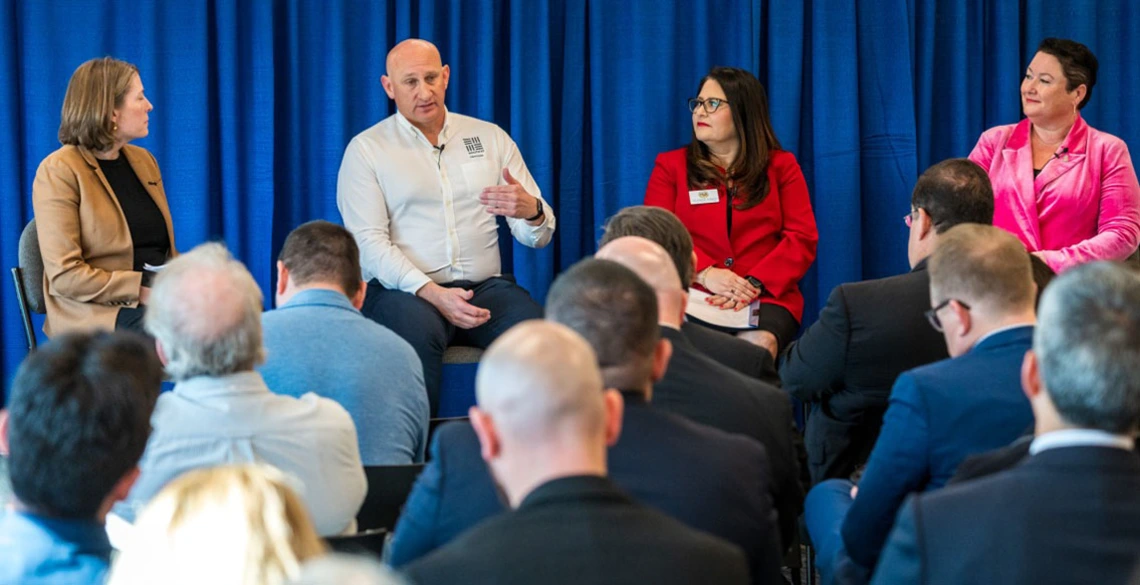Symposium Explores Path to Producing More Critical Minerals in US
University of Arizona's School of Mining & Mineral Resources fosters Arizona's role in clean energy.

Panelists, from left, Kray Luxbacher, Pat Risner, Lea Márquez Peterson and Joellen Russell discuss critical minerals in Arizona.
The University of Arizona‘s School of Mining & Mineral Resources co-hosted the Arizona Critical Minerals Symposium with global mining and metals company South32 on Feb. 15. The event opened a dialogue between the mining industry, government representatives, and academia about the pivotal role of critical minerals in Arizona.
South32 recently announced it will develop the federally designated critical minerals zinc and manganese at its Southern Arizona project site, the Hermosa project.
“When you announce a $2.16 billion investment, you have to quickly figure out how you're going to train and develop the workforce to operate that equipment and operate the facility," said South 32’s Hermosa project President Pat Risner. "We are very fortunate to be developing a project like this in a community that has a world-class university like the University of Arizona, and one of the few remaining top-notch mining schools. This will be a game changer for jobs in this region.”
Joining Risner on the panel were Arizona Corporation Commissioner Lea Márquez Peterson and Joellen Russell, head of the Department of Geosciences and the Thomas R. Brown Distinguished Chair of Integrative Science. The moderator was Kray Luxbacher, department head of mining and geological engineering and the Gregory H. and Lisa S. Boyce Leadership Chair of Mining and Geological Engineering.
Poised for Growth
For the United States to better compete in the global clean energy economy, major investments must be made in America’s infrastructure and supply chains. Panelists discussed Arizona’s unique role in securing a domestic supply chain of the materials needed to power solar, wind, geothermal and other forms of energy that don't involve fossil fuels.
Arizona is a hotbed of critical minerals and materials such as zinc, manganese, and copper, which poises the state to create jobs and economic growth.
"Critical minerals have viable deposits only in a few places," said Peterson, noting that the U.S. produces less than 6% of the world’s zinc. With China mining more than 60% of rare earth elements globally, sourcing more of these materials domestically would bolster national security and create greater economic stability.
Panelists also outlined the challenges and opportunities facing the state as the energy transition continues. Russell pointed out that Tucson and Phoenix are the third and fourth fastest-warming cities in the nation, and that “we’re in the bullseye of the climate hot seat.”
“That’s why we’re partnering with Engineering and Mining Engineering on this fantastic new School of Mining & Mineral Resources. All these new technologies are made possible by the critical minerals that we're pulling out of the ground,” she said.“This is Arizona. This is what we do. And we're really good at it.”

